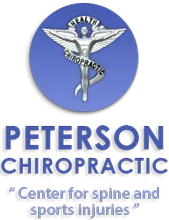
Many patients with severe low back pain report that their pain came on suddenly when they did something as simple as bend down to pet their cat, put on their socks, or pick up the newspaper. Just about everyone would agree that a person's body should be able to handle such simple movements. So what has happened?
In every one of these cases, the joints of the patient's body were "all locked up" -- they were barely moving at all. When the joints in one area of the body do not move the way they should, other areas of the body are forced to move more in order to compensate. This creates a significant stress on those areas that have to pick up the slack, and it soon leads to pain and inflammation. At the same time, the areas that don't have normal movement will slowly worsen as the muscles continue to tighten, the joints stick together, and the ligaments and tendons shorten. This leaves the body in a very unstable condition; if left unchecked, this process will continue until the body can hardly move at all. That is how a person comes to suffer flare-ups of pain at the slightest provocation.
Most of us have seen people who have lost most of their normal mobility: they look like bodies have been starched stiff whenever they try to move around. This is especially prevalent among the elderly. Contrary to popular belief, however, this is not an inevitable effect of aging; rather it is the inevitable effect of not maintaining the body's mobility through exercise, healthy alignment, and body mechanics. There are people in their 60s, 70s, or even older, who are stronger and more flexible than the average person in their 30s, simply because they keep themselves exercising.
Maintaining mobility is critical in order to live free from pain and disability. Maintaining good mobility is not difficult, but it does not happen on its own. Just as in developing a good posture, it is necessary that you perform specific exercises and stretches to keep your muscles, ligaments, and tendons flexible and healthy. In addition, it is necessary that all of the joints in your body are kept moving correctly as well. Although this can be achieved to a great degree through stretching, most people also find routine chiropractic adjustments to be very beneficial.
